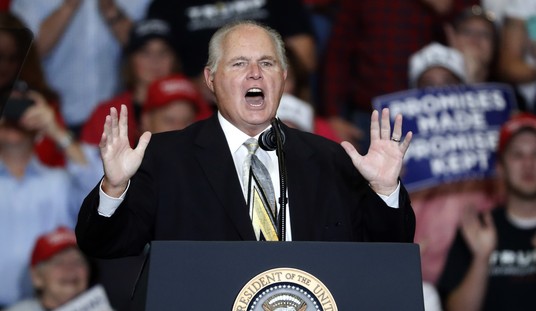Ever think about insurance? It’s not really a difficult idea, although the mathematics that goes with it — called “actuarial science” — can be hard going. But the basic idea is simple: you are making a bet with a bookie that some unfortunate thing will happen to you in some fixed length of time.
Usually, the one hard thing about explaining insurance is that you’re doing exactly what Pete Rose said he never did: you’re betting against your own team. If the unfortunate thing happens, at least you win your bet, and you get some money — or at least your heirs do. If it’s car insurance, you are betting you will have a car accident during the term of the insurance, and the insurance company is betting you won’t; if it’s life insurance, you’re betting the insurance company you will die during the term of the insurance, and they’re betting you won’t.
Stripped down to its simplest terms, figuring the premium is easy too. Let’s say you want to buy a life insurance policy that will pay your family $100,000 if you die during the year 2009. The insurance company looks at your age, your sex, your weight, your health, and whatever else they think might apply — do you make your living jumping monster trucks over school buses? — and figures the odds of you dying during 2009. If their figures tell them that the chances are about 1 in 20, the basic premium will be about 1/20th of $100,000, or about $5,000, plus some amount for administrative costs and for reserves.
So remember, if you ever feel like no one cares if you live or die, buy some life insurance. Then at least the insurance company cares; in fact, they’re willing to bet money you’ll live.
The bookie insurance company can make that bet with you because they will make the bet with lots of other people too. If the chances of your dying are really about 1 in 20, then they figure about 19 out of 20 people like you will lose the bet and won’t die. If they set the premium to be, say, $5,100, then they take in about $120,000 total, and if everything goes the way they expect, at the end of the year they will have about $2,000 left with which to buy naming rights on stadiums and build massive, imposing, conservative, businesslike headquarters so no one has to think about them being in the same basic business as the Golden Nugget Casino.
It used to be that health insurance worked more or less the same way. I remember when I was a kid, my Dad had what was called “major medical” — if I went to the doctor for a cold, he paid the doctor. The year I broke my right index finger by punching my brother, who happened to be wearing a cast because he’d just broken his arm playing bantam-league football — it’s amazing how hard those things are — Blue Cross paid for most of the X-rays, the emergency room visit, and the plaster.
At that point, it was still a bet. We didn’t go to the emergency room all that often, and no one had any really major illnesses, so my father’s business could pay a relatively small amount and the insurance company would bet him that they, on average, wouldn’t have to pay out more than that small premium amount for us and a million families like us.
Health insurance started to change, though, during the Truman administration. (I hasten to mention that I wasn’t actually there: I was born during the Eisenhower administration, when the process had only gotten started.) Truman wanted to implement the progressive new notion of a national health care plan, but couldn’t get it through; at the same time, post-war wage controls were still on, so employers bidding for new workers had to find other ways to compete.
Through a sequence of compromises, what came out of it was a system in which companies and only companies could buy health insurance and health care for their employees, and deduct the cost as a business expense. My father’s music store and the steel mill across town could buy health insurance, basically, at a discount. (My uncle the butcher couldn’t; he wasn’t a “business.”)
Years pass. (Insert visual of wind-blown calendar leaves here.) Medical care becomes more complicated, legal conditions change, and a lot of things that used to be major medical issues that mostly affected the life insurance rates become things that could be cured, or at least managed. Increasingly, what was “major medical” insurance became, simply, health insurance; we expected the insurance companies not just to pay for unexpected events, but for the normal sort of day-to-day maintenance we all need.
At this point, though, the “insurance” model breaks down. If the insurance company is going to pay for things that are nearly certain to happen, they have to charge a big enough premium to pay for that and some extra to pay expenses. For a long time, this wasn’t noticeable, because companies were paying in those nice pre-tax discounted dollars, but it’s always been true. If you sell a life insurance policy for a hundred-year-old man with failing kidneys and pneumonia, the premium is going to be a little bit more than the face value of the policy; if you have to pay for the health care that is almost certain to be needed, every year, you’re going to have to charge a little more than that health care will cost.
So now it’s election season 2008, and the candidates are talking about the “health care crisis.” It’s a funny sort of crisis in one sense, because people are managing to survive to be older and healthier than they were before the crisis. But if a politician insists it’s a crisis, who are we to argue? Certainly there is an issue that some people can’t afford to pay cash for day-to-day care, and old-fashioned “major medical” is hard to find.
The solution we have been offered on both sides of the aisle is something like the “Massachusetts Plan,” where everyone has to have health insurance. “Has to have,” here, being enforced by the government — Senator Clinton has spoken specifically of garnisheeing wages of people who don’t want to participate — with some kind of public funding for people who just can’t afford it.
Here’s where things start to get tricky, though. Some people — young people just out of school for example — aren’t making a lot of money, but then don’t really want to spend a lot of money on insurance. Normally, they wouldn’t have to: other than accidents and very rare diseases, a 25-year-old shouldn’t normally need anything more than minor maintenance and occasional hangover cures. The idea of the mandate, though, is that if you include these low-risk people in the whole insurance pool, the premiums they pay can be added back to the pot for older people and people with serious illnesses, which makes the insurance more “affordable” — for them.
It’s exactly the same situation as if we charge a 25-year-old the same amount for a year’s term life insurance as we charge his 75-year-old grandfather: it may make the insurance more affordable for Granddad, but it does so by overcharging young Elmo. Add in the “mandate,” so Elmo can’t opt out, and we have a universal care plan that forces Elmo to pay for services he doesn’t get so that Granddad can pay less for the services he gets. But it’s “voluntary” — you get to pick your insurance plan to some extent — and it’s not “tax-supported” because you are just paying the insurance company directly.
Except for the cost of administering the plan itself, and the wages they take through a garnishee if I don’t “volunteer.”
So in this mandated universal coverage plan, the government comes and makes me give someone money so it can be distributed to other people, and I don’t have any choice about participating. Where I come from, we call that a “tax.”
Whatever it is, it ain’t insurance.
Charlie Martin is a Colorado computer scientist and nearly-successful screenwriter who contributes to the Flares Into Darkness political blog as “Seneca the Younger,” and blogs under his own name at the aggressively non-political Explorations blog.










Join the conversation as a VIP Member